Lexicon of the Hamas Organization
The Battle of Sderot
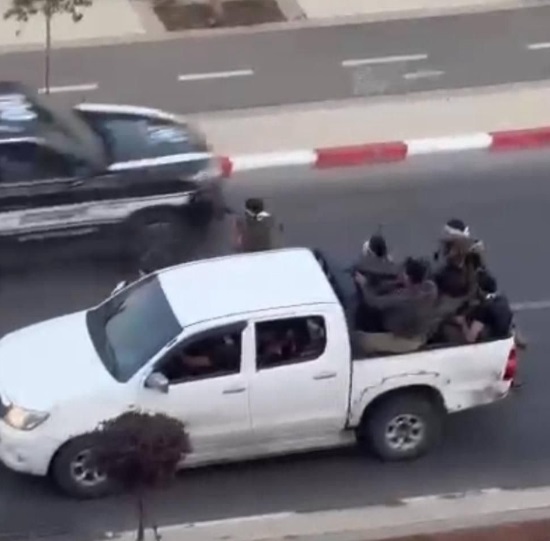
Sderot’s Police station, attacked on Oct 7th. Credit: �?החדשות החמות’ FB page.
The Battle of Sderot, a significant event in the ongoing conflict between Hamas and Israel, unfolded dramatically on October 7, 2023. This article provides a detailed account of the battle, shedding light on the historical role of Sderot in the conflict and the harrowing events of the October 7th massacre.
Historical Background of Sderot in the Hamas-Israel Conflict
Sderot, an Israeli town located near the Gaza Strip, has long been a focal point in the conflict between Hamas and Israel. The town’s proximity to Gaza has made it a frequent target of rocket attacks and incursions over the years, marking its significant, albeit challenging, position in the region’s geopolitical landscape.
The October 7th Massacre
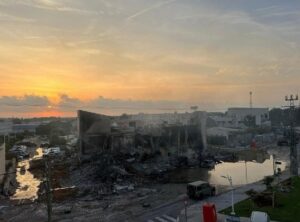
Sderot’s Police station, attacked on Oct 7th. Credit: �?החדשות החמות’ FB page.
Initial Attack: On October 7, 2023, Hamas launched a large-scale surprise attack against Southern Israel, including Sderot, which was widely condemned as an act of terrorism. This attack saw Hamas militants massacre at least 50 civilians and 20 police officers in a brutal act of violence in Sderot.
Hamas gunmen from Gaza entered Sderot and engaged in firefights with local police units and civilians. The attack was shockingly violent, with many civilians murdered on the streets and in their homes.
Police Station Siege: The militants eventually overpowered the garrison at the local police station, occupying it and killing approximately 30 people, including police officers and civilians. Israeli Defense Forces (IDF) reinforcements later surrounded and regained control of the station, killing at least 10 Hamas militants in the process.
Demolition of Police Station: In a tough decision to stop Hamas, the district commander ordered the bulldozing of the Sderot police station with the militants inside, after ensuring that no police officers were alive inside. This decisive action led to the elimination of the terrorists and the complete destruction of the station.
Civilian Tragedy: One of the most tragic incidents involved a minibus carrying retirees, some of whom were Holocaust survivors. The bus, which had stopped at Sderot due to a flat tire, came under attack from Hamas militants. The occupants, attempting to seek shelter, were brutally murdered.
A Story of Heroism: Amid the chaos, a notable act of heroism occurred when an Israeli Arab construction worker tried to drive a family to safety, only to be killed along with the mother and police officers attempting to assist them. This act highlighted the complex dynamics of coexistence and cooperation between Arabs and Jews in Israel.
Aftermath and Ongoing Tensions
By October 8, Israeli forces had regained control over Sderot, but the battle continued against remnants of Hamas militants in Southern Israel. The town, along with neighboring areas, remained on high alert due to suspected infiltrations and ongoing security operations. Additionally, Hamas’s Al-Qassam Brigades launched more rocket attacks, claiming to target Sderot, further escalating the situation.
Conclusion
The events of October 7th, marked by extreme violence and bravery, reflect the profound challenges and resilience of the people caught in the crossfire of this enduring conflict.
Lexicon of the Hamas Organization
Qasem Soleimani

Qasem Soleimani. Credit: Bloomberg FB page.
Qasem Soleimani, born on March 11, 1957, in Qanat-e Malek, Kerman Province, Iran, was a prominent figure in the Middle Eastern geopolitical landscape, particularly in the context of the Israel-Iran conflict. His career in the Islamic Revolutionary Guard Corps (IRGC) and his leadership of the Quds Force marked him as a key player in shaping Iran’s foreign military and political strategies.
Early Life
Soleimani’s early life was marked by hardship. He left school at 13 to work on construction sites, helping to repay his father’s debts. Influenced by the sermons of Hojjat Kamyab, a protégé of Ali Khamenei, he began engaging in revolutionary activities.
Military Career
Joining the IRGC in 1979 following the Iranian Revolution, Soleimani quickly advanced, playing a significant role in suppressing a Kurdish uprising and serving in the Iran-Iraq War (1980-1988). His strategic and brave actions during the war earned him rapid promotions.
Command of Quds Force
Soleimani assumed command of the IRGC’s Quds Force between 1997 and 1998. Under his leadership, the Quds Force evolved into an elite unit for covert and expeditionary warfare, extending Iran’s geopolitical influence across the Middle East.
Role in the Israel-Iran Conflict
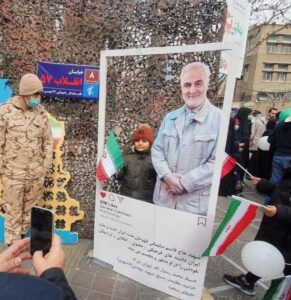
An Iranian child next to Sulimani’s cut out. Credit: Israel Defence forces FB page.
Soleimani’s strategic military interventions were pivotal in shaping the Israel-Iran conflict. He was instrumental in the creation and maintenance of Hamas’ tunnel warfare network in the Gaza Strip. This strategy effectively brought Iran’s influence to Israel’s borders, altering regional dynamics.
Arming and Training Iran’s Proxies
Under Soleimani’s command, the Quds Force played a crucial role in supporting and arming Iran’s proxies, like Hezbollah in Lebanon and Hamas and the Palestinian Islamic Jihad in Gaza. These groups received substantial funding, training, and weapons from Iran, enabling them to conduct operations against Israel. In Syria, instead of using a terrorist proxy, Iran directly entrenched itself, influencing the political and military actions of the Assad regime. This involvement allowed Iran, alongside Hezbollah, to establish military bases near Israel’s northern border.
Assassination

Anniversary of Sulimany’s assassination. Credit: Anadolu Agency FB page.
Soleimani was assassinated on January 3, 2020, by a U.S. drone strike near Baghdad International Airport. This act escalated tensions between the U.S. and Iran, sparking debate over its legality and repercussions. Iran termed the attack as state terrorism, leading to heightened hostilities, including Iran’s missile attacks on U.S. forces in Iraq.
In conclusion, Qasem Soleimani’s life and career were deeply intertwined with the military and political developments in the Middle East. His actions and strategies significantly influenced Iran’s foreign policy and its conflict with Israel. His assassination marked a pivotal moment in ongoing tensions between Iran and the United States, with far-reaching implications for regional stability and the Israel-Iran conflict dynamics.
Legacy on the Arab Israeli Conflict
Qasem Soleimani’s legacy in the Arab Israeli conflict is marked by his strategic and tactical contributions to Iran’s proxy groups in the region. His efforts in arming, training, and guiding organizations like Hezbollah, Hamas, and Palestinian Islamic Jihad significantly intensified the conflict’s dynamics. By empowering these groups, Soleimani helped solidify Iran’s role as a key player in the conflict, projecting its influence directly to Israel’s borders. His actions fostered an environment of heightened tension and frequent confrontations, leaving a lasting impact on the security and political landscape of the Middle East. His death, while altering the immediate strategic calculations, has not diminished the long-standing influence of the strategies he implemented in the region.
Lexicon of the Hamas Organization
Al Shifa Hospital
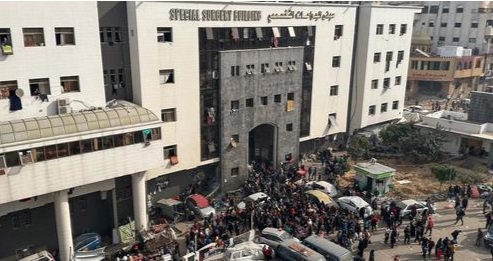
Shifa Hospital. Credit: �?Washington Post’ FB page.
Al-Shifa Hospital, the largest medical facility in Gaza, has played a significant role in the region’s history, particularly during various conflicts involving Israel and Palestinian factions. This article provides an overview of the hospital’s background, its role in conflicts and the controversies surrounding it.
Background and History
Al-Shifa Hospital, originally a British Army barracks, was transformed into a hospital in 1946. During the 1948 Arab Israeli War, it became one of Gaza’s primary medical facilities. Following the war, the Egyptian administration expanded the hospital, adding various departments. Post the 1967 Six-Day War, when Israel occupied Gaza, the entire Egyptian hospital staff was taken prisoner, and subsequently, the hospital underwent significant renovations and expansions under Israeli administration. This included the addition of a large basement in the 1990s, which later became a point of controversy regarding its use.
Use During the 2007 Fatah-Hamas Conflict
During the Fatah-Hamas conflict in June 2007, Al-Shifa Hospital became a site of violence between the two factions. The conflict led to the deaths of members of both groups within the hospital premises. Hamas also reportedly dismissed hundreds of Fatah-affiliated medical staff and used the hospital as a strategic location. This period was marked by fear and violence within the hospital, severely affecting its operation and medical staff.
Role in the Wars with Israel
Al-Shifa Hospital has been central during various wars between Israel and Gaza. For instance, during the 2008-2009 Gaza War, the hospital was overwhelmed with casualties due to Israeli airstrikes. Allegations surfaced that Hamas used the hospital as a military base, a claim that was difficult to verify due to restricted access to Gaza by journalists. These allegations have been a recurrent theme in subsequent conflicts, contributing to the complexity surrounding the hospital’s role in the region.
Al-Shifa Hospital in the 2023 Israel-Hamas War

Hamas Tunnels under Al-Shifa Hospital. Credit: Ohad Hemo’s FB page.
The 2023 Israel-Hamas war brought Al-Shifa Hospital back into the spotlight. Israel and the U.S. accused Hamas of using the hospital as a command center, for storing weapons, and holding Israeli hostages.
Legal and Ethical Implications
The use of Al-Shifa Hospital in armed conflict raises significant legal and ethical questions. Under international law, hospitals enjoy protected status, which is jeopardized if the facility is used for military purposes. The allegations and counter-allegations regarding the hospital’s use in the 2023 conflict illustrate the challenges in maintaining this protected status in a war zone. The international community’s response and the calls for investigation highlight the complexities of warfare in densely populated urban areas like Gaza.
Conclusion
Al-Shifa Hospital’s history is deeply intertwined with the broader geopolitical and humanitarian issues in the Gaza Strip. Its role in various conflicts, especially the recent 2023 Israel-Hamas war, underscores the challenges of operating a major medical facility in a conflict zone. The hospital not only provides essential medical services to the population of Gaza but also represents the difficulties faced in preserving humanitarian spaces in times of war.
Lexicon of the Hamas Organization
Saleh al-Arouri
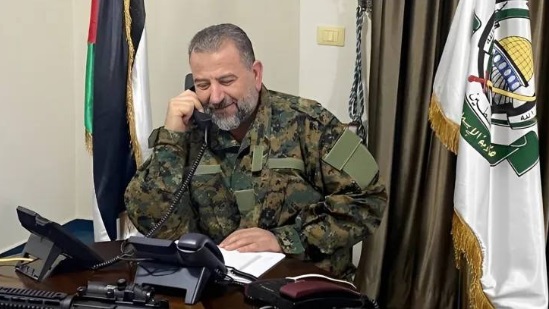
Saleh al-Arouri. Credit: �?Eadio 786’ FB page
Saleh al-Arouri is a prominent Palestinian figure known for his deep involvement with Hamas. His association with Hamas has placed Saleh al-Arouri in the spotlight of the Israeli-Palestinian conflict.
Early Life and Involvement with Hamas
The early life of Saleh al-Arouri is marked by his gradual involvement with Hamas. This organization, known for its political and militant activities against the State of Israel, became a platform for Saleh al-Arouri to rise as a significant leader. His roles within the group have been diverse, encompassing both political strategy and militant operations.
Leadership and Strategy

Saleh al-Arouri and Ayatollah Khamenei - Iran’s former leader. Credit: Hillel Fuld’s FB page.
As a leader in Hamas, Saleh al-Arouri has been involved in planning and directing various activities in the West Bank. His leadership style and strategic decisions have significantly influenced the group’s operations in this region. Saleh al-Arouri’s approach often mirrored the overarching goals and tactics of Hamas, particularly in relation to the Israeli-Palestinian conflict.
Assassination of Saleh al-Arouri
Saleh al-Arouri, was assassinated on January 2, 2024, in a strike on an office in the Dahieh neighborhood of Beirut, Lebanon. This strike, widely believed to be carried out by Israel, also resulted in the deaths of six other individuals, including high-ranking Hamas militants. His assassination occurred just a day before the fourth anniversary of the assassination of senior Iranian military commander Qassem Soleimani.
-
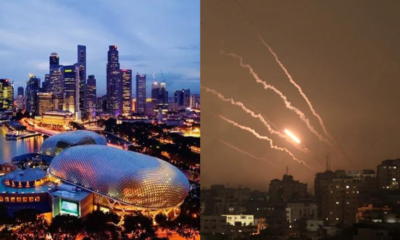
 News4 months ago
News4 months agoGaza could Have Been Singapore. Hamas Turned It Into a living nightmare
-

 News4 months ago
News4 months agoRape, slaughter, and atrocities—see the real face of Hamas
-

 News4 months ago
News4 months agoShe died while saving lives.
-

 News4 months ago
News4 months agoTrigger warning: This is the atrocity that’s happening in Israel right now
-
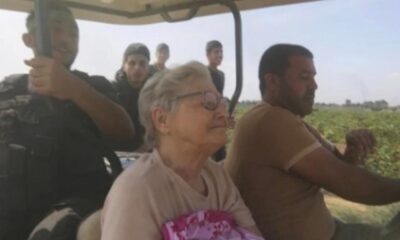
 News4 months ago
News4 months agoKidnapping elderly and children: Hamas are no heroes
-
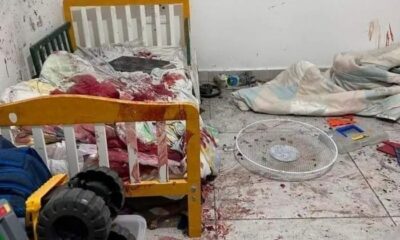
 News4 months ago
News4 months agoMonsters: Yahya Sinwar and Hamas kidnapped 150+ children and women.
-

 Hamas War Strategy, Tactics, and PR4 months ago
Hamas War Strategy, Tactics, and PR4 months agoThe War Crimes of Hamas and ISIS in Exploiting Civilians
-

 News4 months ago
News4 months agoHamas turns a music festival into a massacre






